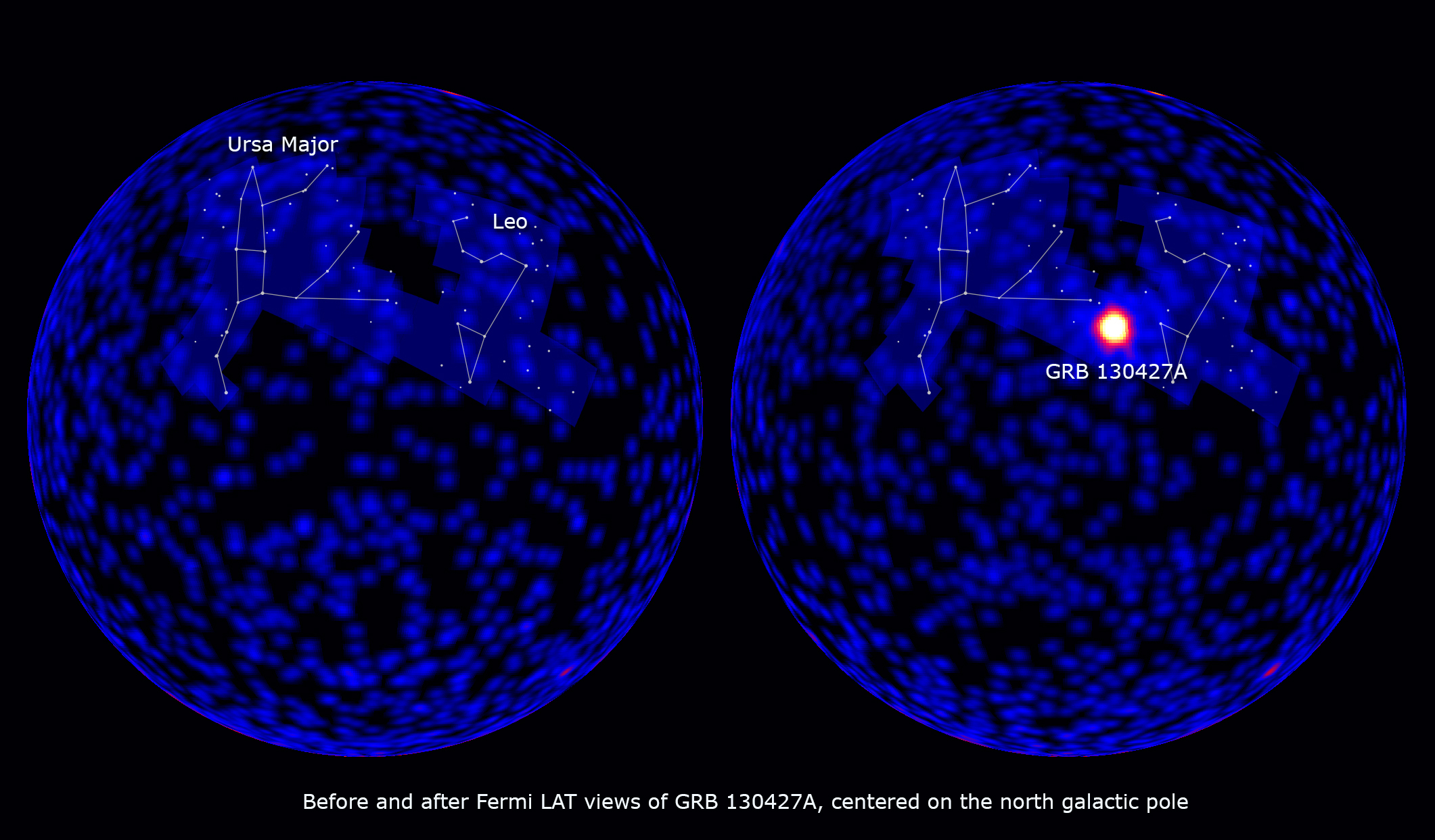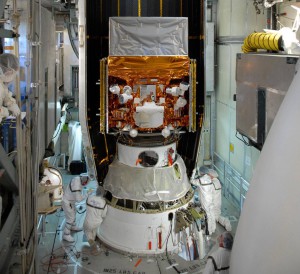
Image Credit: NASA/DOE/Fermi LAT Collaboration
Five years since its launch, NASA’s Fermi Gamma-ray Space Telescope has embarked on a new five-year mission to probe ever deeper into the mysteries of the high-energy cosmos. Already a hugely successful tool in astrophysics and particle physics, Fermi’s Large Area Telescope (LAT) will be tasked to perform deeper exposures of the central Milky Way Galaxy, which is known to be packed with pulsars and other high-energy objects, as well as being one of the best places to search for the gamma-ray signals from dark matter. “Over the next few years,” explained Julie McEnery, the mission’s project scientist at NASA’s Goddard Space Flight Center in Greenbelt, Md., “major new astronomical facilities exploring other wavelengths will complement Fermi and give us our best look yet into the most powerful events in the Universe.”
Developed with collaboration from the U.S. Department of Energy’s Office of Science, together with academic institutions in the United States, France, Germany, Italy, Japan, and Sweden, Fermi was originally called the Gamma-ray Large Area Space Telescope (GLAST) and rocketed into orbit on 11 June 2008, aboard a Delta II vehicle. Its primary task was to utilize its LAT instrument to perform all-sky surveys of various phenomena, including active galactic nuclei, pulsars, and elusive dark matter. Another instrument, the Gamma-ray Burst Monitor (GBM), was used to study highly energetic gamma-ray bursts. On 26 August 2008, two months after launch, the spacecraft was renamed in honor of Enrico Fermi, the Italian theoretical and experimental physicist who pioneered high-energy physics.

Always intended to operate for up to 10 years, Fermi resides in a low-Earth orbit of about 340 miles altitude. Its LAT instrument scans the entire sky every three hours, yielding sharper data, a wider field of view, and a broader energy range than anything previously achievable. “As the LAT builds up an increasingly detailed picture of the gamma-ray sky, it simultaneously reveals how dynamic the Universe is at these energies,” said principal investigator Peter Michelson of Stanford University. Meanwhile, the GBM instrument has the capability to see all of the sky—save the portion blocked by Earth—at any time. “More than 1,200 gamma-ray bursts, plus 500 flares from our Sun and a few hundred flares from highly magnetized neutron stars in our galaxy, have been seen by the GBM,” said principal investigator Bill Paciesas, a senior scientist at the Universities Space Research Association’s Science and Technology Institute in Huntsville, Ala.
Key scientific discoveries have included a pulsar in the CTA-1 supernova remnant, some 4,600 light-years from Earth, a massive gamma-ray burst in the constellation Carina in September 2008, and the highest energy output (more than 4 billion electron volts) ever seen in a solar flare. Giant “bubbles,” extending more than 25,000 light-years “above” and “below” the plane of the Milky Way Galaxy, were also discovered by Fermi. “Scientists think these structures may have formed as a result of past outbursts from the black hole—with a mass of four million Suns—residing in the heart of our galaxy,” NASA noted. Additionally, the spacecraft has employed its unique instruments to observe more down-to-Earth phenomena, including nearly 800 gamma-ray flashes from positrons generated in powerful terrestrial thunderstorms.
Two weeks ago, on 11 August 2013, the spacecraft’s new mission officially began. “As Fermi opens its second act, both the spacecraft and its instruments remain in top-notch condition and the mission is delivering outstanding science,” said Paul Hertz, director of NASA’s astrophysics division in Washington, D.C.
Want to keep up-to-date with all things space? Be sure to “Like” AmericaSpace on Facebook and follow us on Twitter: @AmericaSpace



